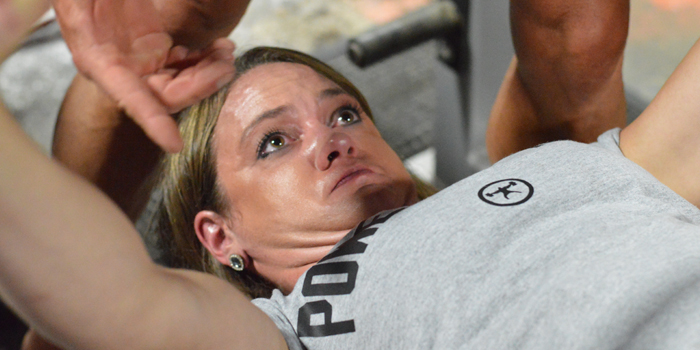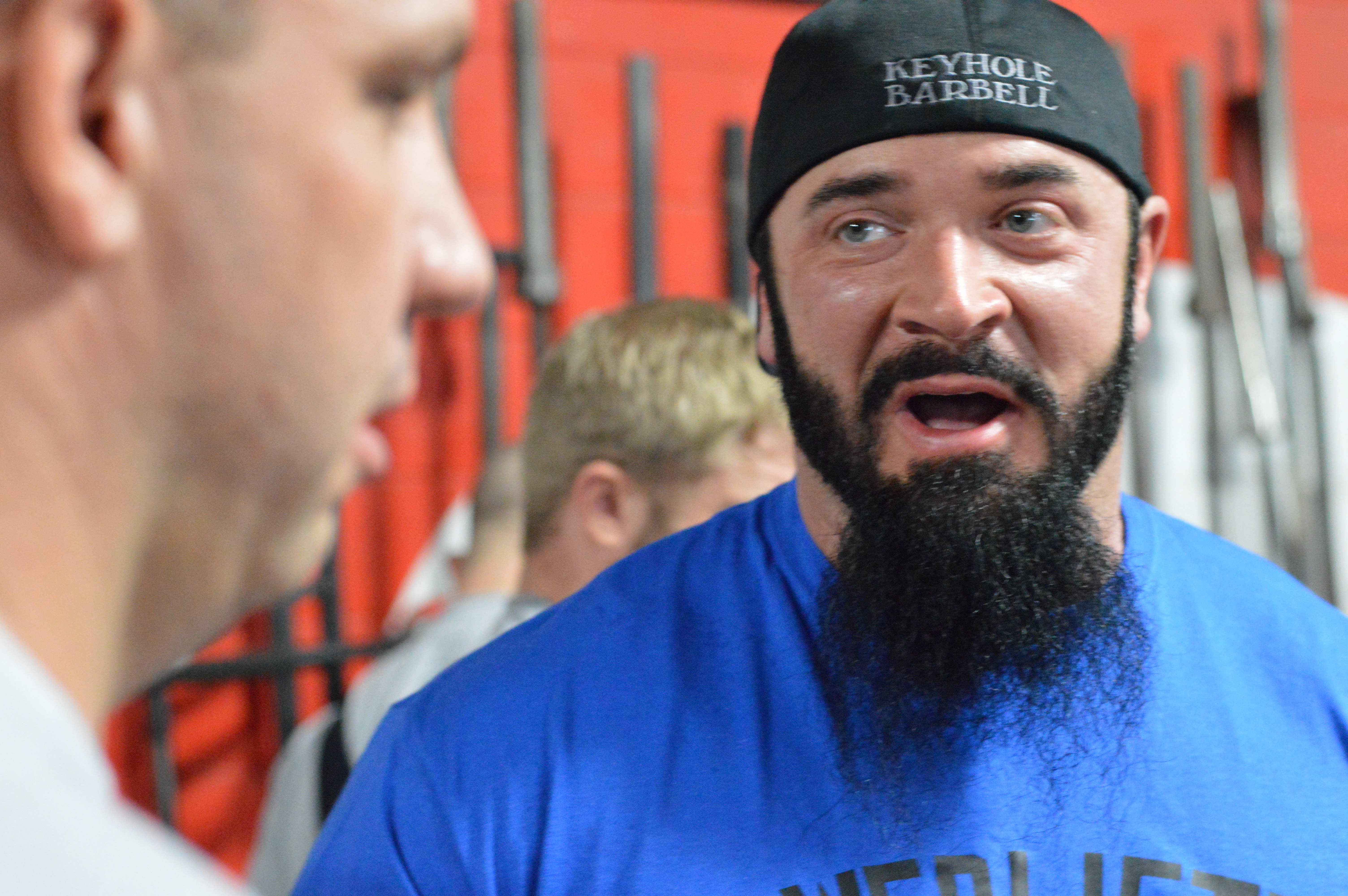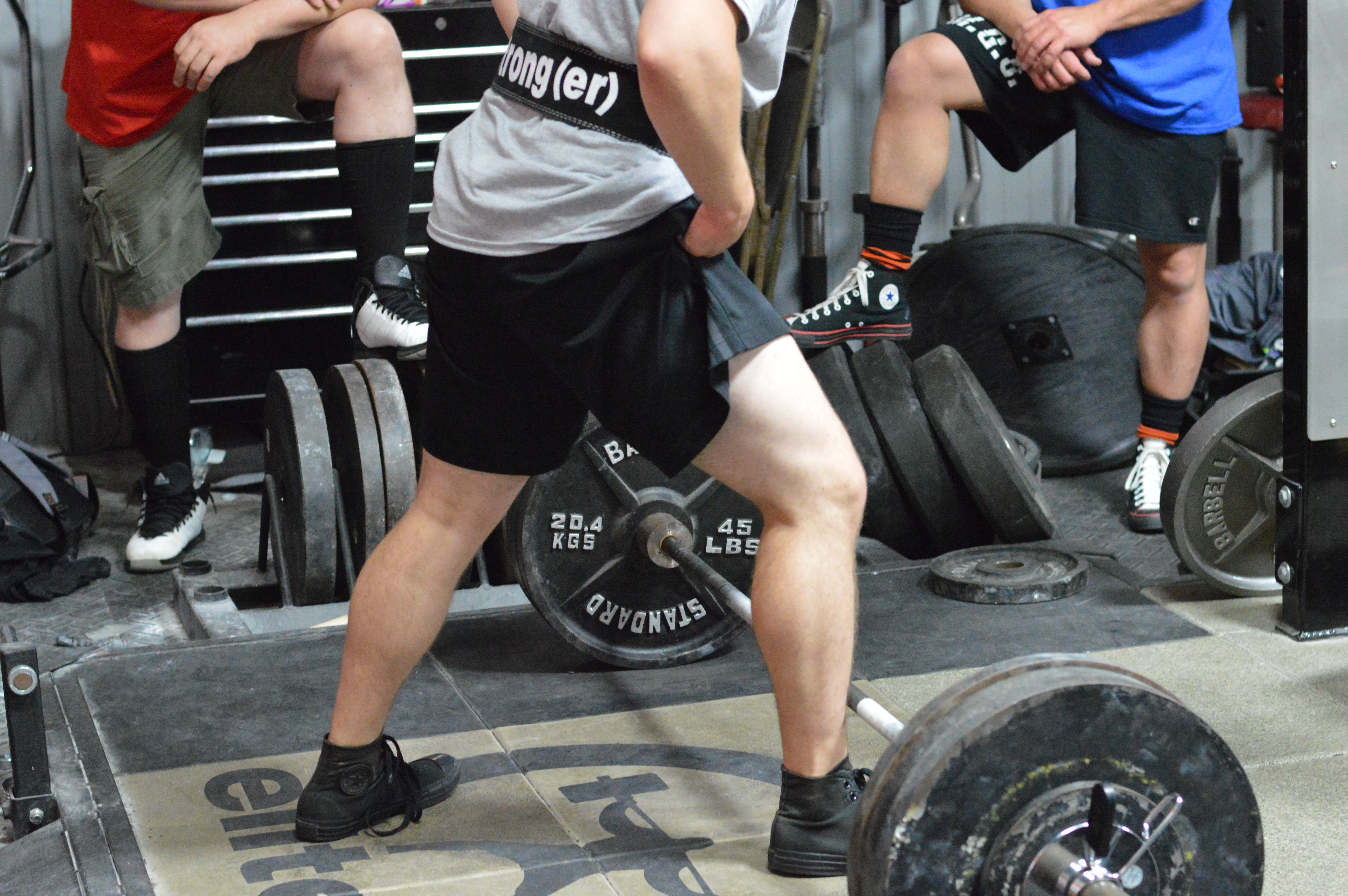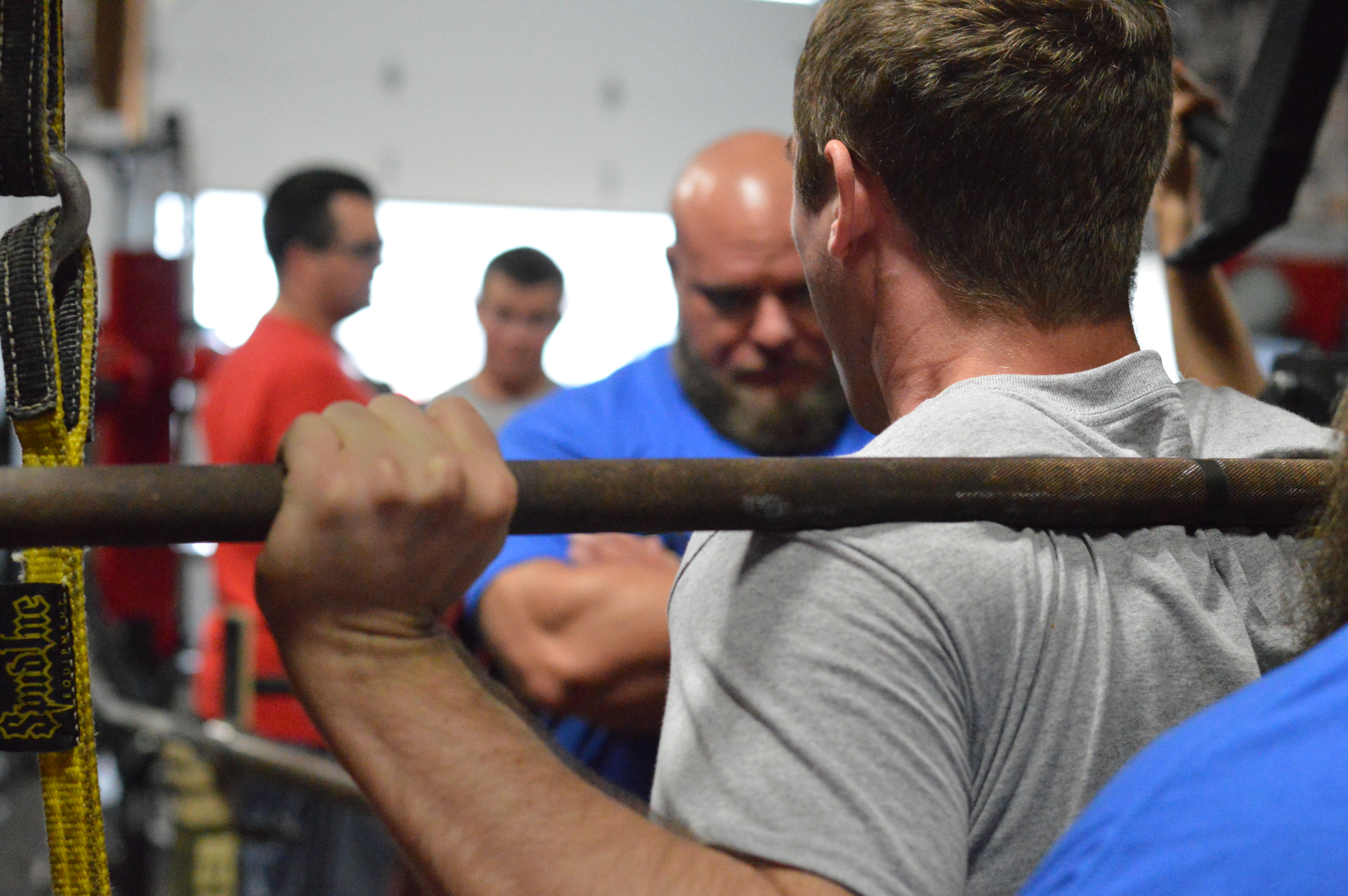
I’m huge on movement patterning, both as an athlete and as a physical therapist. Our bodies adapt relatively quickly based on the internal and external cues we provide to it and the postures and tone that we “do life” in, training included; our patterns become so much a product of our stimulus, for better or for worse.
I’m approaching Swede's 5thSet from the view point of injury prevention coupled with strength progression that promotes longevity of a competitive lifting career. This matters to me because I honestly think that what I’ve needed all along while trying to figure out how not to regress (even if it sacrificed progress) while dealing with my own injury was for Swede to write this book.
I’m at a bit of a crux in my own training. For the first time in a while, I’m finally on the road to being healthy again courtesy of Steve Trippe’s modifications in my movement and recruitment patterns. When I think about why I’ve been injured so long and why injuries compounded the way they did, the biggest culprit I can identify is that I couldn’t get “out” of my dysfunctional movement patterns without sacrificing something I wasn’t willing to. The two options:
1. Lower the weight and cut the intensity before a meet, which I didn’t want to do for obvious reasons.
2. Continue lifting in my asymmetrical patterns in hopes of, at best, not regressing. This also kept me from progressing.
This also kept me from progressing. Constantly training heavy trained my body to access whatever dysfunctional patterns were necessary to move the bar, causing breakdown in certain joints, and it’s taken Trippe’s expertise to “teach” my body to move correctly again.
In retrospect, what I needed was a program that routinely let me progress to heavier weight while priming a movement pattern that emphasized perfect technique and execution. I needed a program that kept the environment controlled enough to permit “perfect practice” of technique for a number of sets and then an avenue to utilize the new movement patterns to build strength.
I talk about this from a standpoint of injury prevention and rehabilitation, but from a more general standpoint, there are a few things every athlete can improve to become more competitive:
1. Technique
2. Patterning and repetition in new patterning
3. Targeted work to work through mini-maxes
4. Sufficient hypertrophy work to promote structural stability
5. Sufficient recovery time
What I needed, and likely what you need, is a program that addresses the above list by combining elements of neuroplasticity to prime the system with fundamentals of strength training to augment the new pattern.
I get so excited about 5thSet because it really is beautifully simple, well-calculated, and fundamentally and scientifically founded. As someone with a medical background, it gets me so excited to see a coach who’s intentionally designed a program with elements in mind that work with our neurological system rather than against it; our neurological system is ultimately what drives our muscles to (hopefully) do what we tell them to do.
I realize I talk a lot about movement patterning, and that it’s a bit of an ambiguous term. When I think about movement patterning and improving technical execution, it largely relates to our brain’s ability to “access” an already existing movement pattern or to problem-solve in real time based on changing variables. Enter neuroplasticity.
Neuroplasticity is a concept that speaks to our brain and neural tissue’s ability to adapt for the purpose of improvement. What’s implied here is that the neuronal networks that drive our movement are dynamic; as strength athletes, our training partially is directed at influencing those neuronal networks. It’s more than a little bit important given that our nerves tell our muscles how tight to be, when to move, and when a load is too much to overcome. A large portion of strength training is actually manipulating or re-training the nervous system. If you want to change a pattern in your movement, you must do it neurally. Neuroplasticity is what allows us to make change to our movement. There are a number of key concepts commonly thought of as components of neuroplasticity, many of them rather intuitive and self explanatory. I’ve highlighted a few of the relevant ones below:
Use It or Lose It: As previously mentioned, our neural networking is a dynamic, ever changing system. Think about the concept of bandwidth: if you aren’t utilizing a skill or applying it to a task, the bandwidth of un-used patterning becomes redistributed to more frequently occurring tasks.
Use It and Improve It: The more we practice a task, the more of our brain responds to that task. This is one of many principles that insinuate that quality matters.
Specificity Matters: Practice directly relating to the desired activity results in greater changes in connectivity.
Repetition Matters: Even when behavior improvements can be seen (think of this as implementing cues you may receive on the spot), repetition of the new pattern or task is required to actually see neural changes.
Intensity Matters: Increased intensity (not repetition) of a task actually strengthens the neural connections in a longer-lasting manner. This is called long-term potentiation, and is considered a large part of what drives motor pattern learning and memory. Long-term potentiation is partially mediated by the brain that serves as a retrieval center. When it comes to pattern development, it makes sense to incorporate this concept.
Salience Matters: How important a task is to the person can actually impact the brains response to reorganize, possibly due to changes in neurotransmitter activity.
Transference: Improvement in one area, or movement, may make it easier to improve in similar tasks.

I haven’t been in the strength athlete community long, but 5thSet is one of the only programs I’ve seen that focuses on motor pattern development by priming the movement systems.
I know I just nerded out hard. Hang with me, because while there are a number of very good programs out there, evaluating (and then trying) 5th Set has made a believer out of me relatively quickly.
Take a look at the above list of things relating to neuroplasticity, and think with me for a moment about the list I wrote initially about what every athlete can improve. I’ll use myself as an example, because it’s the most real-time win I can provide.
I mentioned that with all the asymmetries I had going on, what I needed was a program that provided sufficient technical practice to a threshold that ingrained a desirable pattern, but then provided sufficient intensity to actually drive that pattern to stick and build strength in that position. With 5thSet, the first four sets are providing incredibly specific practice at a repetition range that promotes increased focus that essentially primes the body into a certain pattern. The first four sets permit perfect practice with a little bit of repetition without poor practice that can cause interference in desirable pattern development.
Think about your training days where you’re doing high volume sets and how often the last few reps of each set, compounded over three to four sets, are actually detrimental to technique and pattern development. You get half good and half bad practice. Swede has eliminated that, making the time spent with good technique highly effective. If you want to improve bad enough, if its salient enough to you, you get one set to show it, after having already primed your body to move well. The intensity accrued here is part of what permits the new pattern to stick depending on which point in the cycle you’re in, especially if your intention is to peak for a meet.
WATCH Swede Shares the Training History That Developed '5th Set'
The need for mechanically similar movements (MSM) to improve mini-maxes, or where our lifts may stick, corresponds well to the concept of transference, while the overall volume accrued during a microcycle prohibits interference of motor pattern or technique development. This is relatively fundamental to most training protocols, but the balance of providing enough stimulus that has relevant carryover without impeding development or constantly overreaching is something I know I personally struggle with.
At this point, Swede has jedi mind tricked my brain via neuroplasticity to sufficiently override the system that tells me a weight is too heavy to lift and to do it with improved quality. And yet, there’s still a need for sufficient soft tissue strength and joint integrity to withstand the loads that we’re going to be lifting. This seems natural. Of course we’re going to do some hypertrophy work. My point here isn’t that Swede has done rocket science, but that he has sufficiently focused on the things that matter when it comes to getting stronger and culminating a larger total. His article on assistance work outlines his principles clearly.

Again, there are a lot of “good” programs out there. For someone who requires technical practice and linear progression to increase confidence handling heavier weight, this is it. From a rehabilitative standpoint, you’re gradually permitting your soft tissues to adjust to increased load at a reasonable rate to provide stimulus for strengthening. For me personally, the relative workloads seems reasonable in that work sets are just heavy enough to require technically sounds repetitions, but aren’t so heavy that I start to access dysfunctional patterns to move the weight.
Here’s where this program might not be for you:
If you get sloppy. If you go in and do the work just to check it off the list. If you’re not going to be intentional about making your main movement perfect every time you have your hands on the bar. If you treat 80% like 60% because it’s “light” and not a true max. If you’re going to leave three reps in the tank just because you weren’t feeling up to the task on your fifth set. So much of this actually mimics Swede’s personality, and I think one of the cooler elements of the development of 5thSet is that you can so clearly see his personality come through in the training. You’ll be challenged by this program physically. I know lifting three days a week (or an optional fourth speed day) doesn’t seem like much (I was pulling teeth to get me to drop from five to four training days per week, going to three seemed absurd until I tried it), but you will come to appreciate the intentionality with which you come into each training session, and the mental discipline developed on this program will match the physical strength gains you accrue.
All I have left to say at this point is thank you. Thank you, Swede, for putting yourself out there and giving a bit of yourself for people to see. As an athlete, coach, and therapist, this program covers the bases of what we need physically and mentally. For the first time in a long time, I’m looking forward to knowing I’m headed in the right direction, largely as a result of your intentionality, time, and thought process in developing 5thSet. There is nothing better you can do for people than to give them back a part of their life that had considerable uncertainty. You have changed the game with this.
Dani is a recent DPT (Doctor of Physical Therapy) graduate from Duke University, certified strength and conditioning specialist, and raw powerlifter with best meet lifts of 308/155/402, totaling 865 without wraps in the 123 class at RUM8. Although fairly new to the sport, Dani has jumped in feet first by utilizing her background knowledge of biomechanics and rehabilitation in both her own lifting and the athletes she coaches. Her initiative to learn has driven her to seek out coaches, mentors, and clinical specialists to absorb as much knowledge as she can in a deep desire to empower and inspire athletes. More than anything, she hopes to use her knowledge to make it rain a little bit of glitter and seeks to be a part of helping people be at their best, while chasing a 1000-pound total at 123.











1 Comment